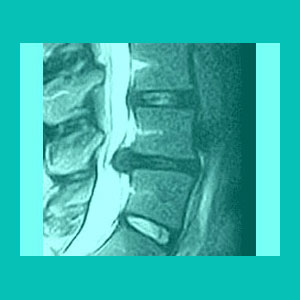
Herniated disc myelopathy is defined as spinal cord damage inflicted by, or related to, a herniation in one or more of the spinal regions. Myelopathy can occur anywhere in the spine and can be related to trauma, disease or other known and unknown reasons, but is always a serious concern for any affected patient.
In virtually every case of myelopathy involving a causative or contributory intervertebral pathology, spinal cord or spinal nerve damage occurs due to continued structural compression enacted by particularly severe bulging or ruptured discs. Spinal cord damage is one of the most severe injuries a person can endure during their lifetime and might have far ranging and permanent effects on their physical functionality and quality of life.
This dissertation investigates spinal myelopathy problems that are related to intervertebral pathologies.
Types of Herniated Disc Myelopathy
There are 2 forms of spinal cord injury, complete and incomplete. Complete injury means that there is no neurological function preserved below the level of injury. Incomplete means there is little, some or almost all neurological function below the affected vertebral level. Obviously, complete injuries are far more severe and incomplete injuries range from minor to extreme. Additionally, myelopathy can occur in the neck, middle back or lower back. The higher up on the spine the damage exists, the worse the effects will often be for the patient, since they will affect more of the body and more systemic functions.
Cervical myelopathy is generally worse than lumbar myelopathy, but each case is unique. Since cervical herniated discs are commonplace, many patients with significant disc pathologies might have to face the very real possibility of myelopathy.
Herniated Disc Spinal Cord Trauma
Disc-related myelopathy is generally the result of 2 possible events.
The first is spontaneous traumatic injury to a previously healthy intervertebral level. This causes the disc to violently bulge into the spinal canal or even rupture and fragment into the spinal cord. This can create damage to the sensitive spinal cord tissues, which may result in temporary or permanent myelopathy concerns.
The other common scenario is when a pre-existing spinal disc issue is suddenly aggravated, most often by the same types of massive trauma, and bulges further into the spinal cord. The results are the same, but in rare cases, a calcified herniation or osteochondral bar can actually partially or totally sever the spinal cord altogether, resulting in a paralysis condition. This is certainly not common and represents a worst case scenario.
Herniated Disc Myelopathy Evaluation
Myelopathy is perhaps the very worst of the spinal injuries a person can ever endure. Herniated discs are not generally the source of spinal cord damage, but may be implicated in the worst traumatic events. Far more usual is the occurrence of central spinal stenosis due to a combination of disc bulge and other contributory factors, such as spinal osteoarthritic activity, ligamentum flavum hypertrophy and/or a congenitally narrowed central spinal canal.
Regardless of the cause of your myelopathy condition, it is crucial to receive care from a dedicated specialist in spinal cord injury. There are always new treatment options in development, although most turn out to be greatly disappointing. Stem cell research seems to have the most potential to provide benefits for injured spinal tissue, yet this controversial therapy remains mired in philosophic argument when it should be helping injured people to heal.
Herniated Disc > Herniated Disc Injury > Herniated Disc Myelopathy




